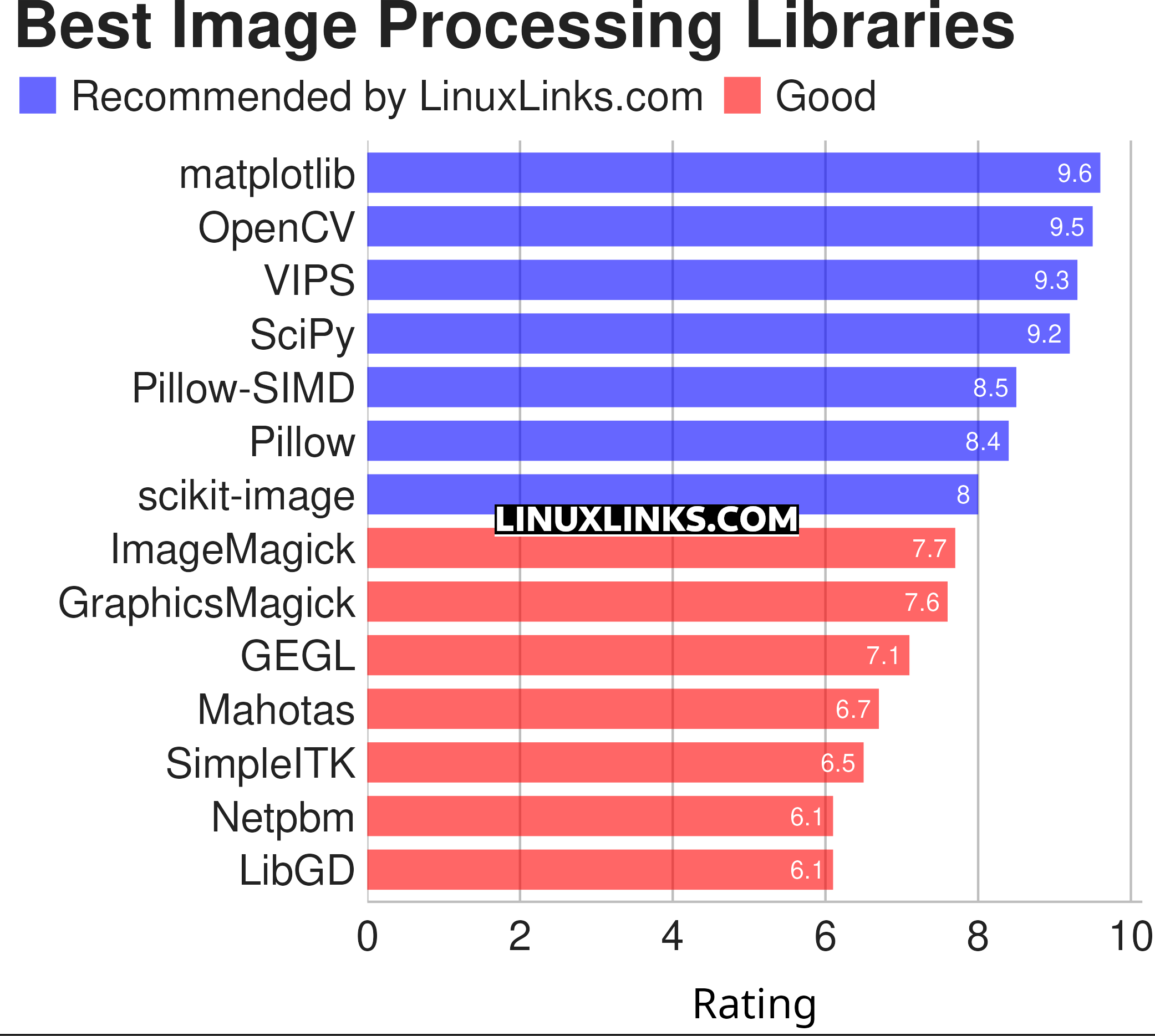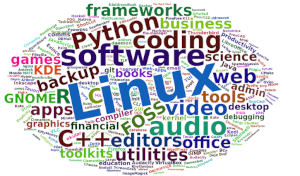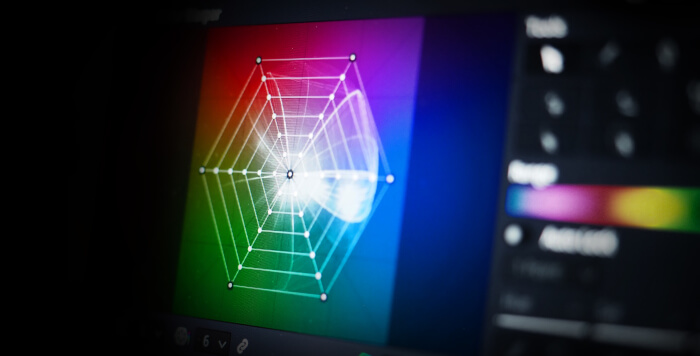When we think of great open source image processing software, tools like GIMP, Blender, and Inkscape instantly spring to mind.
We’ve covered a huge raft of graphics software for Linux with a splurge of recommended roundups. But there are some categories of graphics software which attract less exposure. Image processing libraries is a good example. This type of software performs image processing operations. They can perform arithmetic, histograms, convolution, morphological operations, frequency filtering, colour, resampling, statistics, and much more.
Good libraries support a wide range of image formats such as JPEG, TIFF, PNG, WebP, FITS, Matlab, OpenEXR, PDF, SVG, HDR, PPM, CSV, GIF, Analyze, NIfTI, DeepZoom, and OpenSlide.
In this article we recommend the finest image processing libraries. Our recommendations are captured in a legendary LinuxLinks chart. As you can see, there are many great libraries for developers. Only free and open source software is eligible for inclusion.

Let’s explore the 14 image processing libraries. For each program we have compiled its own portal page, a full description with an in-depth analysis of its features, together with links to relevant resources.
| Image Processing Libraries | |
|---|---|
| matplotlib | Python 2D plotting library |
| OpenCV | Library that includes several hundreds of computer vision algorithms |
| VIPS | Fast image processing library with low memory requirements |
| SciPy | Scientific Computing Tools for Python |
| Pillow-SIMD | Highly optimized downstream Pillow fork |
| Pillow | Fork of the Python Imaging Library |
| scikit-image | Collection of algorithms for image processing |
| ImageMagick | Uses multiple computational threads to increase performance |
| GraphicsMagick | Billed as the Swiss army knife of image processing. |
| GEGL | Generic Graphics Library |
| Mahotas | Library of fast computer vision algorithms |
| SimpleITK | Image analysis toolkit with a large number of components |
| Netpbm | Toolkit for manipulation of graphic images |
| LibGD | Library for the dynamic creation of images by developers |
For more Python image processing libraries, check out this roundup
This article has been revamped in line with our recent announcement.
 Read our complete collection of recommended free and open source software. Our curated compilation covers all categories of software. Read our complete collection of recommended free and open source software. Our curated compilation covers all categories of software. Spotted a useful open source Linux program not covered on our site? Please let us know by completing this form. The software collection forms part of our series of informative articles for Linux enthusiasts. There are hundreds of in-depth reviews, open source alternatives to proprietary software from large corporations like Google, Microsoft, Apple, Adobe, IBM, Cisco, Oracle, and Autodesk. There are also fun things to try, hardware, free programming books and tutorials, and much more. |
